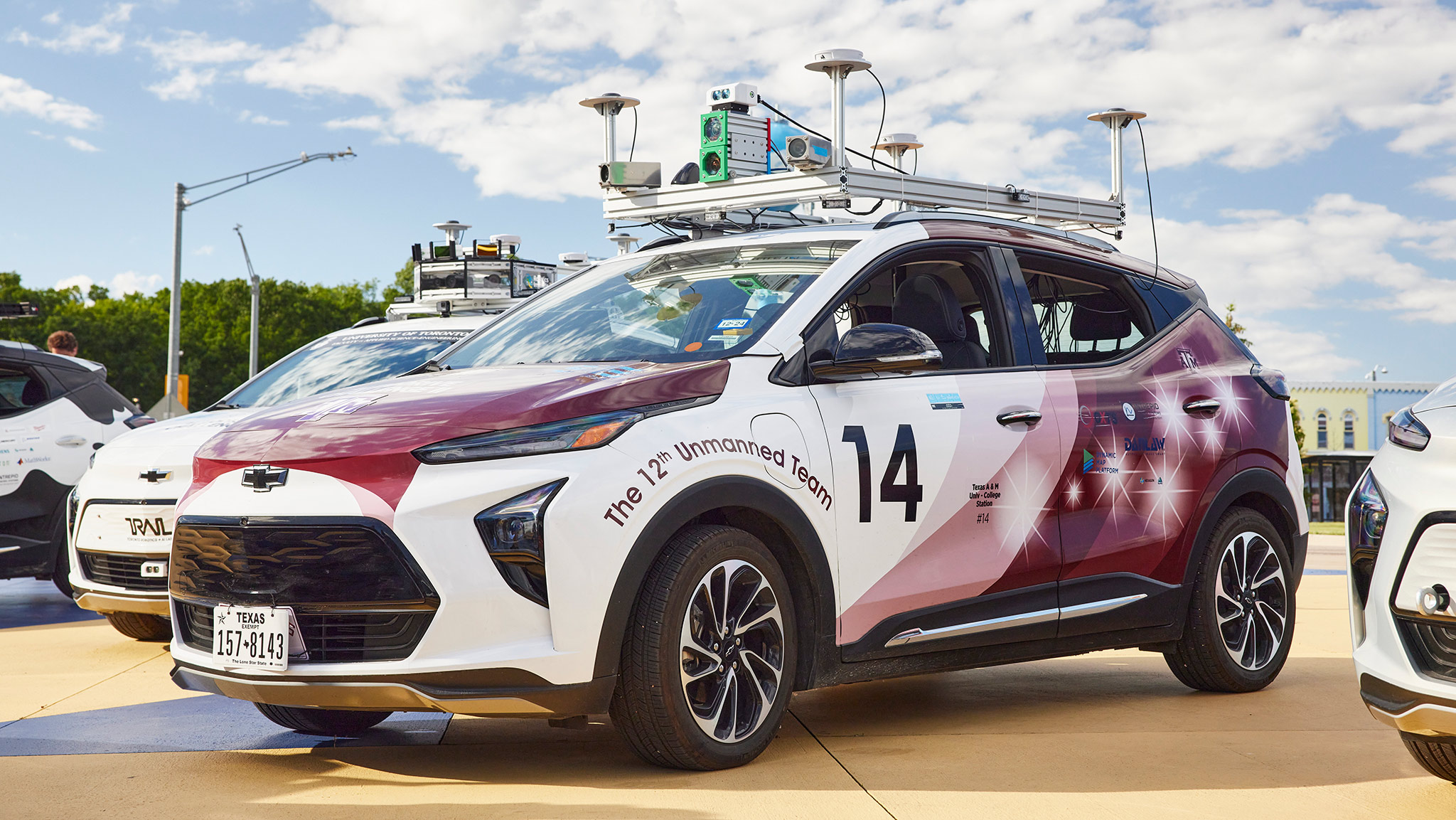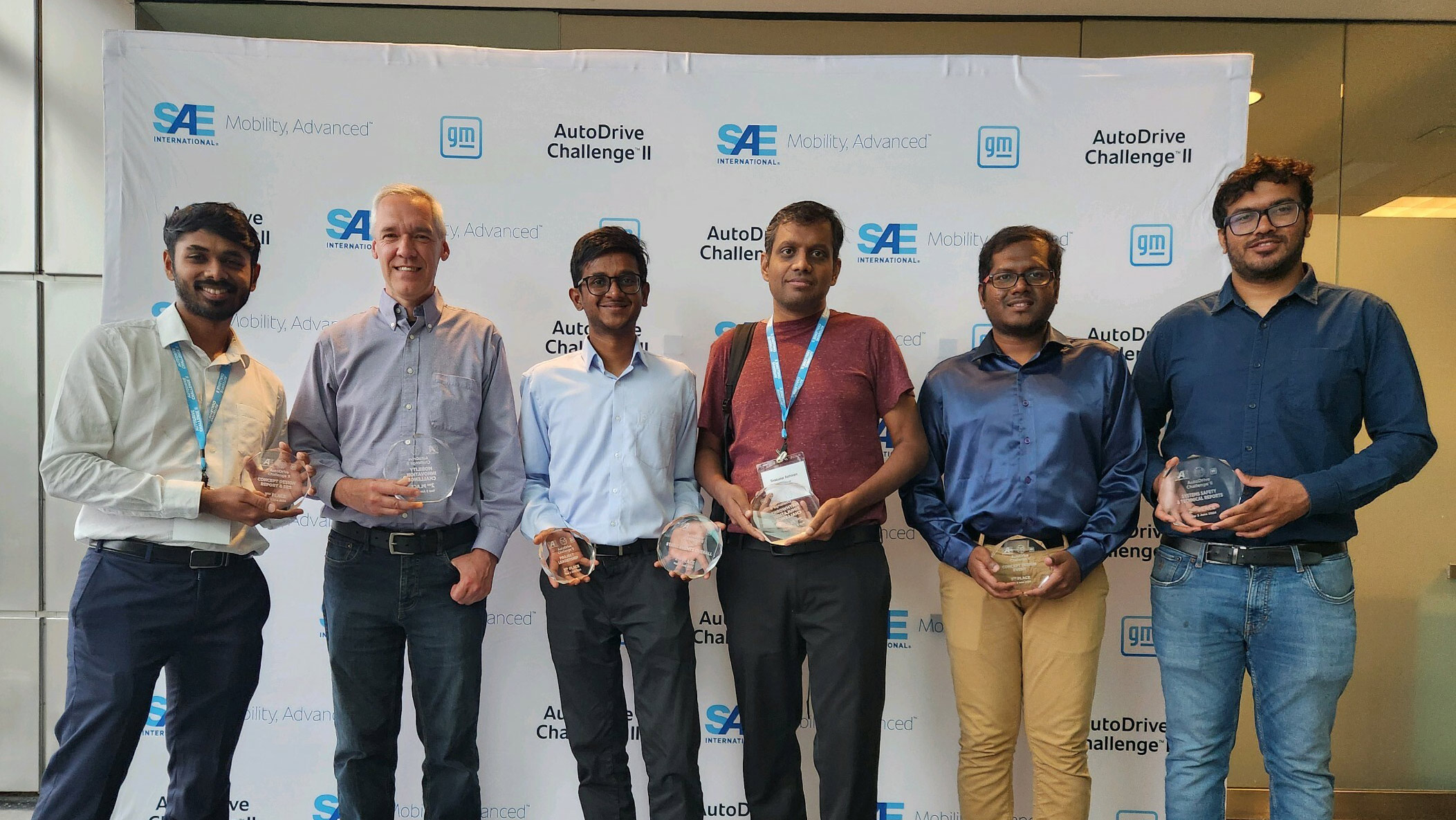
The Texas A&M University AutoDrive team, “the 12th unmanned,” recently received 2nd place overall in the SAE AutoDrive Challenge, a prestigious competition sponsored by General Motors.
Competing against university teams from across the United States and Canada, this team has worked tirelessly to develop a Level 4 autonomous vehicle capable of handling complex driving scenarios.
With nearly fifty students from departments such as mechanical engineering, computer science, and architecture, the team, led by Mechanical Engineering faculty advisors Dr. Sivakumar Rathinam and Dr. Swaroop Darbha, has successfully navigated numerous challenges to achieve this result. Their 2nd place finish is a testament to their dedication, innovation, and collaborative efforts in advancing autonomous vehicle technology.
Team members shared their thoughts on their experience working on the project and its impact.
Q: What problem is this project seeking to solve?
Sivakumar Rathinam: The goal of the SAE AutoDrive Challenge is to develop a Level 4 autonomous car that is capable of tackling various challenging scenarios that a vehicle could encounter, such as navigating through intersections, obeying traffic rules, and maintaining safety in the presence of many static and dynamic obstacles. To this end, the challenge builds up over a series of four years, wherein in each year, the team builds on the progress of the previous years and must develop software and integrate necessary hardware into the vehicle to accomplish the goals of the current year.
In addition to in-vehicle testing, the teams must work towards many static challenges, wherein the teams must perform simulations in MATLAB, develop metrics for ensuring the safety of the vehicle, work on Gannt charts and workload balance to ensure that the various deliverables can be achieved, and team members are not overworked, among others.

Q: What did the team create out of this project?
Deepak Prakash Kumar: The team was able to implement and test algorithms for the car to navigate intersections, such as stopping at a red light or taking a turn at an intersection, performing a lane change to avoid blocked lanes, rerouting to avoid roads that are blocked, avoiding dynamic obstacles such as pedestrians and deer, among others.
Q: What was the most impactful part of this experience?
Deepak Prakash Kumar: “The biggest impact of such a project is to provide an understanding of the difficulty of making not only one small module for the vehicle to work but also to make all modules on the vehicle interact with each other and perform the desired task. While performing experiments, the team was faced with many unforeseen scenarios that had to be rectified quickly. Through this year’s competition, the team has become increasingly cognizant of this through experience, and each team member will have this understanding going forward.”
Q: What has been the biggest challenge?
Deepak Prakash Kumar: “The biggest challenge last year was to undergo a complete transition from the computer science department to mechanical engineering, wherein the entire team had to be formed. The team had to learn the methods implemented by the previous team in the first two years of the challenge that started in 2021. The team had to learn how to interact with the car and control it before starting to work on deliverables for the current year. The team was able to navigate this uphill task and perform extremely well in each facet of the competition under the guidance of all the mentors.”
Q: What are you most proud of with this project?
Deepak Prakash Kumar: “The biggest accomplishment for the team, having undergone a difficult transition, was the performance at MCity, wherein the vehicle was able to perform all the anticipated maneuvers by the team. The vehicle was able to perform lane changes, interact with traffic lights, navigate through intersections, etc. Such an accomplishment in the first year of the competition for the team provides us with a lot of confidence going forward.”